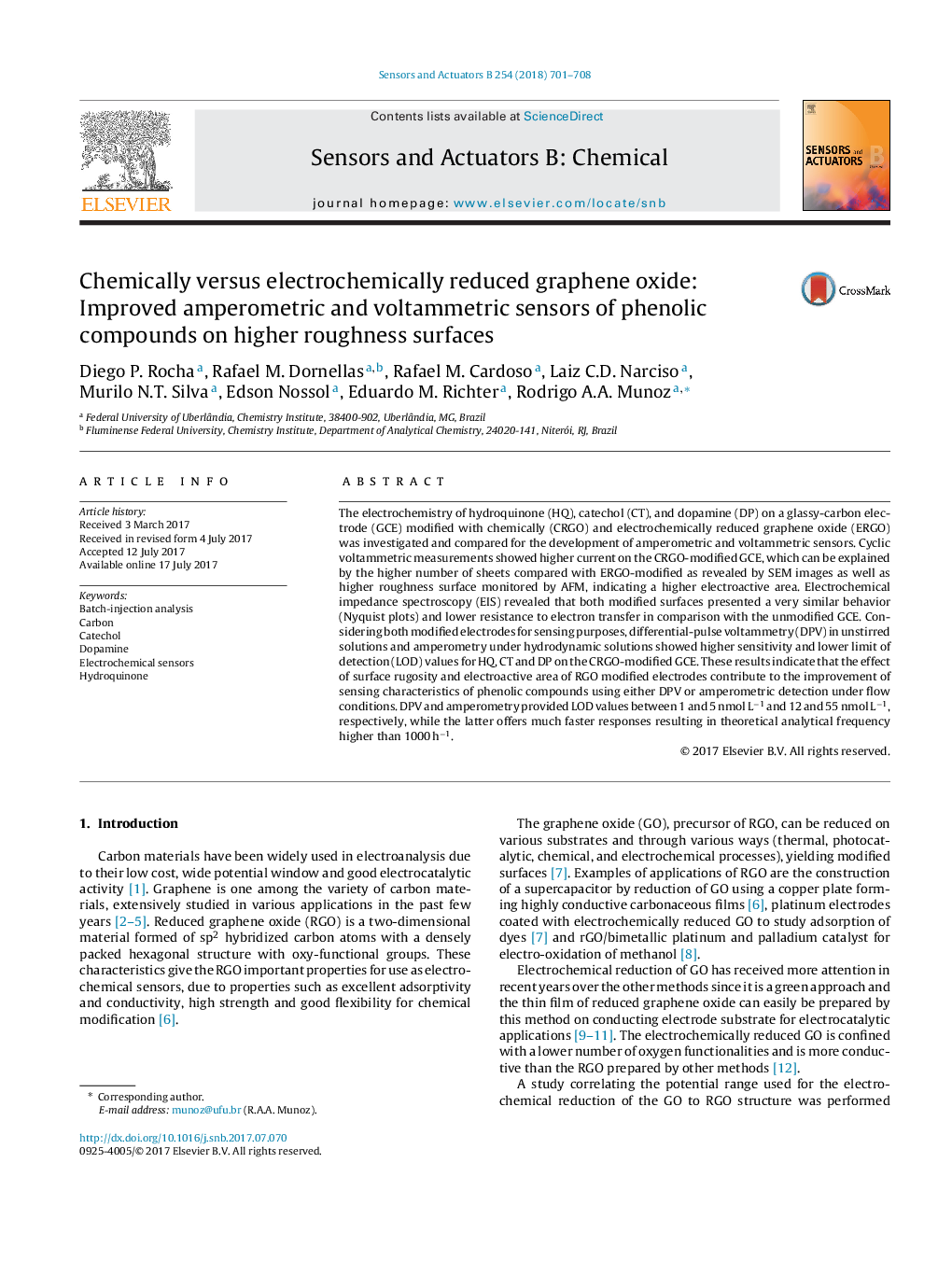| کد مقاله | کد نشریه | سال انتشار | مقاله انگلیسی | نسخه تمام متن |
|---|---|---|---|---|
| 5008725 | 1462037 | 2018 | 8 صفحه PDF | دانلود رایگان |

- ERGO- and CRGO-modified surfaces were compared to develop sensors.
- EIS showed improved electron transfer on both modified surfaces.
- Higher electrochemical area and rugosity if CRGO may explain the higher currents.
- More sensitive detection using DPV and amperometric techniques on CRGO surface.
- Nanomolar DPV or amperometric detection of hydroquinone, dopamine and catechol.
The electrochemistry of hydroquinone (HQ), catechol (CT), and dopamine (DP) on a glassy-carbon electrode (GCE) modified with chemically (CRGO) and electrochemically reduced graphene oxide (ERGO) was investigated and compared for the development of amperometric and voltammetric sensors. Cyclic voltammetric measurements showed higher current on the CRGO-modified GCE, which can be explained by the higher number of sheets compared with ERGO-modified as revealed by SEM images as well as higher roughness surface monitored by AFM, indicating a higher electroactive area. Electrochemical impedance spectroscopy (EIS) revealed that both modified surfaces presented a very similar behavior (Nyquist plots) and lower resistance to electron transfer in comparison with the unmodified GCE. Considering both modified electrodes for sensing purposes, differential-pulse voltammetry (DPV) in unstirred solutions and amperometry under hydrodynamic solutions showed higher sensitivity and lower limit of detection (LOD) values for HQ, CT and DP on the CRGO-modified GCE. These results indicate that the effect of surface rugosity and electroactive area of RGO modified electrodes contribute to the improvement of sensing characteristics of phenolic compounds using either DPV or amperometric detection under flow conditions. DPV and amperometry provided LOD values between 1 and 5 nmol Lâ1 and 12 and 55 nmol Lâ1, respectively, while the latter offers much faster responses resulting in theoretical analytical frequency higher than 1000 hâ1.
Journal: Sensors and Actuators B: Chemical - Volume 254, January 2018, Pages 701-708